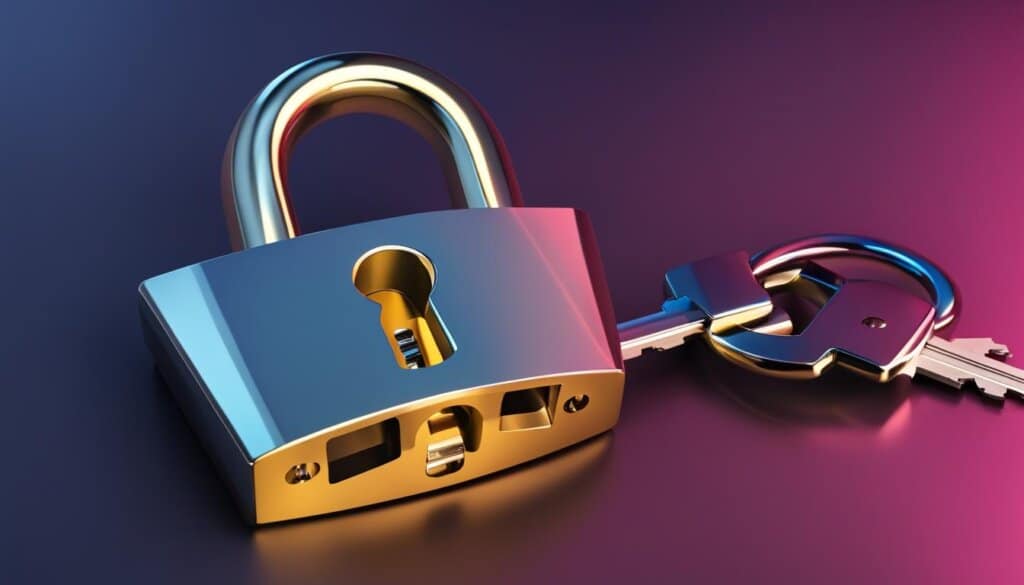Table of Contents
Two-factor authentication (2FA) is a security system that requires two distinct forms of identification to access something. It can be used to enhance the security of online accounts, smartphones, and even physical doors. The first factor is usually a password, and the second factor can be a code sent to a smartphone, biometric data like fingerprints, or other forms of authentication. While 2FA improves security, it is not foolproof and can still be vulnerable to hacking attempts.
What is two-factor authentication? Two-factor authentication, also known as 2FA, is a security system that requires two separate forms of identification to access something. It can be used to strengthen the security of online accounts, smartphones, and physical doors. The first factor is typically a password or PIN, and the second factor can be a code sent to a smartphone or biometric data like fingerprints. 2FA adds an extra layer of security, but it is not completely foolproof and can still be susceptible to hacking attempts.
What Is Two-Factor Authentication (2FA)?
Two-factor authentication (2FA) is a security system that strengthens the protection of online accounts, smartphones, and physical doors by requiring two distinct forms of identification. This adds an extra layer of security beyond a simple password or PIN.
The first factor of authentication is usually something the user knows, such as a password or PIN. The second factor can be a code sent to a smartphone or biometric data like fingerprints. By combining these two factors, 2FA ensures that only authorized individuals can gain access.
While two-factor authentication enhances security, it is important to note that no security system is completely foolproof. Skilled hackers may still find vulnerabilities and attempt to bypass the identification process. However, 2FA significantly reduces the risk of unauthorized access and increases the overall security of sensitive information.
| Pros of Two-Factor Authentication (2FA) | Cons of Two-Factor Authentication (2FA) |
|---|---|
|
|
Despite its limitations, two-factor authentication is a recommended security measure for individuals and organizations alike. By implementing 2FA, the chances of unauthorized access and potential data breaches can be significantly reduced, adding an extra layer of protection to sensitive information.
How Does Two-Factor Authentication Work?
Two-factor authentication (2FA) is a multistep verification process that adds an extra layer of security to the login process. It requires users to provide two distinct authentication factors to access their accounts or systems. The first factor is typically something the user knows, such as a username and password. The second factor is something the user possesses or biometric data that verifies their identity.
The authentication factors used in 2FA can vary depending on the implementation and security requirements. Here are some common authentication factors:
- Knowledge factors: These are things that users know, such as passwords or PINs. They are the initial authentication factor entered during the login process.
- Possession factors: These are things that users possess, such as tokens, key fobs, or smartphones. They provide an additional verification step by requiring the user to have physical possession of the item.
- Biometric factors: These are unique physical or behavioral characteristics of individuals, such as fingerprints or facial recognition. Biometric factors provide a highly secure form of authentication as they are difficult to replicate.
Once the user enters their initial authentication factor (knowledge factor), such as their username and password, they are prompted to provide the second factor. This can be in the form of a code sent to their smartphone, a fingerprint scan, or any other predetermined method.
Two-factor authentication adds an additional layer of security to the login process, making it harder for attackers to gain unauthorized access.
The combination of these two factors makes it significantly more difficult for attackers to gain unauthorized access, even if they have obtained the user’s password. This additional step of verification helps protect against various security threats, such as phishing attacks and password breaches.
Here is a visual representation of the two-factor authentication process:
As shown in the diagram above, the user first enters their username and password (knowledge factor). Once verified, they are prompted to provide the second factor (possession factor or biometric factor) to complete the authentication process.
Examples of Two-Factor Authentication (2FA)
Two-factor authentication (2FA) has become widely used to bolster security measures in various areas. Let’s explore some examples of how 2FA is applied in different contexts:
1. Apple’s iCloud Account
Apple incorporates 2FA to protect users’ iCloud accounts from unauthorized access. When setting up 2FA, users link their Apple devices to their accounts, ensuring that only trusted devices can gain access. This additional layer of security prevents potential hackers from infiltrating important personal information and digital assets.
2. Company Networks
Many businesses implement 2FA to secure their company networks and data from potential breaches. As employees increasingly work remotely, additional authentication measures are vital. By requiring an additional code or verification method, such as a fingerprint scan or time-based one-time password (TOTP), businesses can establish secure connections even when employees are accessing the network from outside the traditional office environment.
“Two-factor authentication for company networks strengthens security protocols, ensuring that only authorized individuals can access sensitive information.”
– [Employee Name], Network Security Specialist at [Company Name]
With 2FA in place, businesses can minimize the risk of unauthorized access to their network resources, thereby safeguarding valuable data and protecting against potential cyber-threats.
Implementing 2FA for company networks often involves collaboration with IT teams or service providers to establish the appropriate infrastructure and secure authentication protocols. This may include the use of dedicated hardware tokens or the integration of software-based authentication solutions.
Overall, the integration of two-factor authentication in Apple accounts and business networks using an additional code or verification method offers enhanced security against potential threats and unauthorized access.
Benefits and Limitations of Two-Factor Authentication
Two-factor authentication (2FA) is a highly effective security measure that enhances the protection of online accounts and sensitive information. By combining multiple layers of verification, it significantly improves security and reduces the risk of unauthorized access. However, like any security measure, it has its own set of benefits and limitations to consider.
Benefits of Two-Factor Authentication
One of the key advantages of 2FA is the improved security it provides. By requiring an additional verification step beyond just a password, it acts as a strong deterrent against various security threats. Here are some key benefits of implementing 2FA:
- Improved Security: Two-factor authentication adds an extra layer of verification, making it significantly harder for hackers to gain unauthorized access to user accounts.
- Protection Against Password Theft: Password theft is a common occurrence, especially due to data breaches and phishing attacks. 2FA greatly reduces the risk of compromised accounts even if passwords are stolen.
- Defense Against Phishing Attacks: Phishing attacks often rely on tricking users into divulging their passwords. With 2FA, even if users unwittingly provide their password, an additional verification step is required to access their accounts.
- Enhanced Account Recovery: In case of account compromise or forgotten passwords, 2FA can serve as a valuable resource for account recovery. It adds an extra layer of identity verification, ensuring that only authorized users regain access to their accounts.
Limitations of Two-Factor Authentication
While 2FA offers improved security, it is important to recognize its limitations and potential vulnerabilities. Here are some factors to consider:
- Phishing Attacks: Despite the added layer of verification, 2FA can still be vulnerable to sophisticated phishing attacks. Attackers may deceive users into providing their verification codes, bypassing the intended security measures.
- Account Recovery Procedures: Hackers can exploit weaknesses in the account recovery process to gain unauthorized access to accounts protected by 2FA. It is essential to maintain robust security measures during account recovery.
- Malware: Malicious software can intercept 2FA verification codes, potentially compromising the security of user accounts. Keeping systems protected against malware is crucial for effective 2FA implementation.
- SMS-based 2FA Insecurities: Text messages used for 2FA can be intercepted or redirected, making them susceptible to unauthorized access. This raises concerns about the overall security of SMS-based 2FA.
Despite these limitations, two-factor authentication remains a highly recommended security measure. With its ability to fortify accounts against password theft, phishing attacks, and unauthorized access, it offers a significant improvement over traditional password protection alone.

Table: Comparison of Different Authentication Factors in Two-Factor Authentication
| Authentication Factor | Strengths | Weaknesses |
|---|---|---|
| Knowledge Factor (Password) | – Familiar and widely used – Easy to create |
– Susceptible to password theft – Prone to weak passwords |
| Possession Factor (Tokens or Smartphones) | – Provides unique physical access – Difficult to replicate |
– Can be lost or stolen – Requires additional hardware or software |
| Biometric Factor (Fingerprint or Facial Recognition) | – Provides strong individual identification – Difficult to replicate |
– Requires specialized hardware or software – Vulnerable to spoofing or false positives |
Implementing Two-Factor Authentication
Implementing two-factor authentication (2FA) is essential for enhancing security in various settings. There are several methods available to implement 2FA, including SMS authentication, mobile device settings, and dedicated authentication providers. The choice of implementation depends on the specific needs and preferences of individuals or organizations.
SMS Authentication
SMS authentication is a widely adopted method for implementing 2FA. It requires users to link a reliable phone number to their accounts and receive a verification code via text message. By entering this code along with their passwords, users provide an additional layer of identity verification. SMS authentication offers convenience as it can be easily set up and accessed through mobile devices.
Mobile Device Settings
Another way to implement 2FA is through the security settings of mobile devices. Many smartphones and electronic devices provide built-in options to enable 2FA. These settings allow users to add an extra layer of security to their accounts and applications by utilizing biometric data such as fingerprints or facial recognition. By configuring their mobile device settings to require biometric authentication along with passwords, users can enhance the security of their personal information.
Authentication Providers
Authentication providers like Microsoft’s Authenticator app offer comprehensive solutions for implementing 2FA. These apps provide a central platform for managing multiple accounts and generating secure codes for authentication. They offer options for individuals and businesses to strengthen account security by using factors such as fingerprint recognition or time-based one-time passwords. Authentication providers simplify the implementation process and ensure seamless integration across various platforms and services.
When implementing 2FA, it is crucial to consider factors such as user convenience, security requirements, and compatibility with existing systems. Organizations should choose a method that aligns with their infrastructure and user preferences. Individuals should select an approach that best fits their devices and usability needs.
Implementing 2FA through SMS authentication, mobile device settings, or authentication providers adds an extra layer of security to protect against unauthorized access. The choice of implementation should be based on the specific requirements of the user or organization, ensuring a secure and seamless user experience.
Two-Factor Authentication Products
Two-factor authentication products offer a range of solutions to enhance security measures. These products are available in different forms, including physical tokens and software-based applications.
Physical Tokens
Physical tokens, such as key fobs or smart cards, provide an additional layer of security for authentication. These hardware tokens generate one-time passwords that are used during the login process. The YubiKey is an example of a hardware token that ensures secure authentication.
Software-Based Solutions
Software-based solutions leverage the capabilities of mobile devices to enhance security measures. Mobile apps can utilize built-in features like fingerprints, facial recognition, or GPS location as additional factors for authentication. These solutions offer convenience and can be easily integrated into existing infrastructure.
Organizations need to deploy systems that recognize and authenticate access for users using their tokens or mobile devices. This ensures that proper security measures are in place to protect sensitive information and prevent unauthorized access.
| Product Type | Key Features | Benefits |
|---|---|---|
| Physical Tokens | – Key fobs or smart cards – Generates one-time passwords |
– Provides an extra layer of security – Reduces the risk of password theft |
| Software-Based Solutions | – Mobile apps – Built-in features (fingerprint, facial recognition, GPS location) |
– Convenient and easily integrated – Utilizes existing mobile devices |
By evaluating the features and benefits of different two-factor authentication products, organizations can choose the most suitable solution for their specific needs.
Tips for Implementing Two-Factor Authentication
When implementing two-factor authentication, it’s important to consider using SMS authentication as it is a common and convenient method. Most users can enable 2FA through the security settings of their smartphones or electronic devices.
Finding the right two-factor authentication provider is also crucial. Each company may have its own implementation process. For example, Microsoft’s Authenticator app allows users to register multiple devices for enhanced protection.
It’s essential to ensure the website or app used for identification is reliable and secure. Additionally, one-time passcodes generated through apps or websites are more time-sensitive and provide an added layer of security.
FAQ
What is two-factor authentication (2FA)?
Two-factor authentication (2FA) is a security system that requires two separate forms of identification to access something. It can be used to strengthen the security of online accounts, smartphones, and physical doors. The first factor is typically a password or PIN, and the second factor can be a code sent to a smartphone or biometric data like fingerprints. 2FA adds an extra layer of security, but it is not completely foolproof and can still be susceptible to hacking attempts.
How does two-factor authentication work?
Two-factor authentication involves a multistep verification process. The user first enters their username and password as the initial authentication factor. Then, they are prompted to provide a second factor, such as a code sent to their smartphone or biometric data. This additional step makes it harder for attackers to gain unauthorized access, even if they have obtained the user’s password. Two-factor authentication can rely on various authentication factors, including knowledge factors (passwords), possession factors (tokens or smartphones), and biometric factors (fingerprint or facial recognition).
Can you give examples of two-factor authentication?
Examples of two-factor authentication include Apple’s use of 2FA to ensure that only trusted devices can access users’ iCloud accounts. Many businesses also use 2FA to control access to their networks, requiring employees to enter an additional code to connect remotely. These extra layers of authentication help protect against unauthorized access, even if someone has the user’s password.
What are the benefits and limitations of two-factor authentication?
Two-factor authentication provides improved security by adding an extra layer of verification. It can help protect against password theft and compromised accounts, especially when users reuse passwords or click on malicious links. However, 2FA is not foolproof and has its limitations. Hackers can still gain unauthorized access through phishing attacks, account recovery procedures, and malware. Critics also argue that SMS-based 2FA is not entirely secure as text messages can be intercepted. Despite these limitations, 2FA is still recommended as it provides stronger security than password protection alone.
How can I implement two-factor authentication?
Implementing two-factor authentication can be done through various methods. SMS authentication is a common and convenient method that requires a reliable phone number for identity verification. Users can also enable 2FA through the security settings of their smartphones or electronic devices. Additionally, there are authentication providers like Microsoft’s Authenticator app that offer 2FA options for both individuals and businesses. The choice of implementation depends on the specific needs and preferences of the user or organization.
What are the different types of two-factor authentication products?
Two-factor authentication products come in different forms, including physical tokens like key fobs or smart cards, as well as software-based solutions like mobile apps. Hardware tokens such as the YubiKey offer a secure way to generate one-time passwords for authentication. Mobile devices, on the other hand, can use built-in features like fingerprints, facial recognition, or GPS location as additional factors. Organizations need to deploy systems that recognize and authenticate access for users using their tokens or mobile devices to ensure proper security measures.
What are some tips for implementing two-factor authentication?
When implementing two-factor authentication, it’s important to consider using SMS authentication as it is a common and convenient method. Most users can enable 2FA through the security settings of their smartphones or electronic devices. Finding the right two-factor authentication provider is also crucial, as each company may have its own implementation process. For example, Microsoft’s Authenticator app allows users to register multiple devices for enhanced protection. It’s essential to ensure the website or app used for identification is reliable and secure. Additionally, one-time passcodes generated through apps or websites are more time-sensitive and provide an added layer of security.












